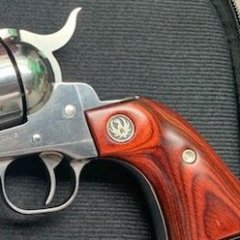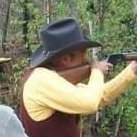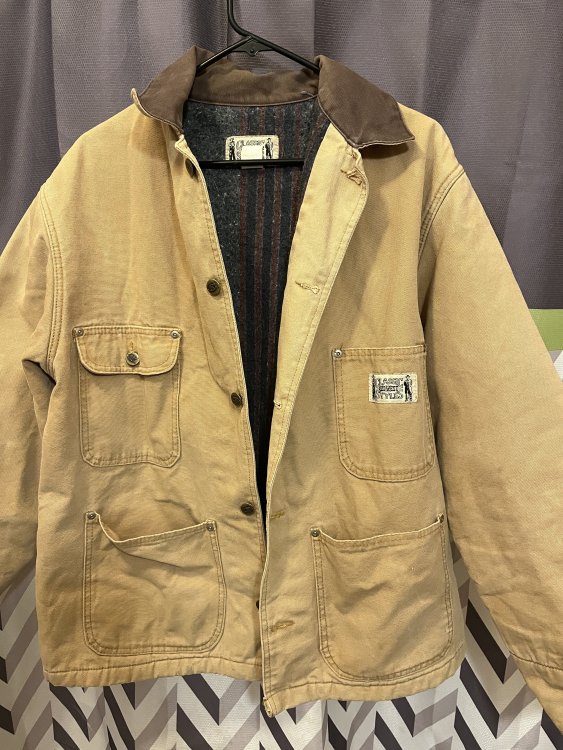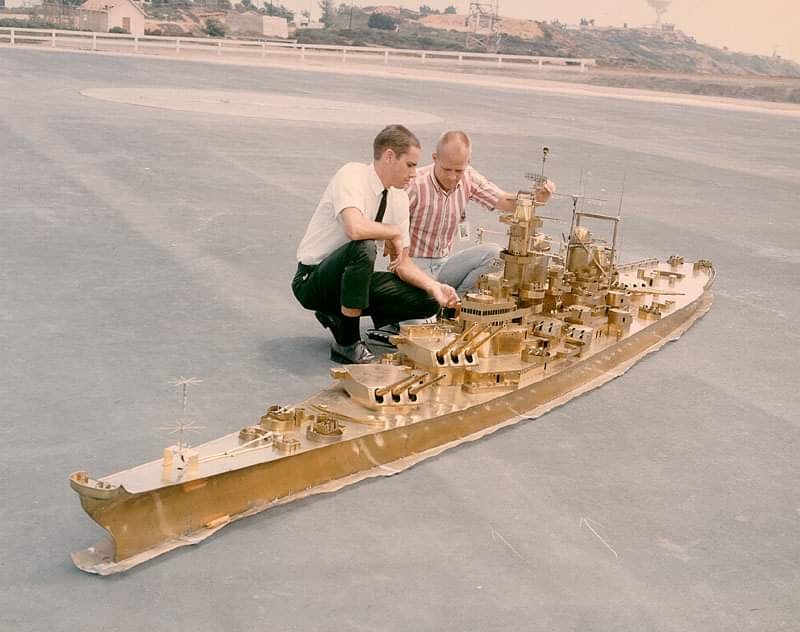The search index is currently processing. Activity stream results may not be complete.
All Activity
- Past hour
-
Looks like the CB's struck again GW
-
Which gave way to Krupp Armour
-
-
You asked about the Harvey, but not the KC. Does that mean you knew what the KC was? I didn't know what either was, but your link explained the Harvey and there was a link in the Harvey site explaining the Krupp Cemented.
-
FS misc Ruger hammers and pawls
Waco Jim replied to Fireball #7709 Life's topic in SASS Wire Classifieds
I'll take the three new stainless Super Blackhawk hammers for $225. -
Hmmm…What’s “Harveyised” plating? Well lookie here… https://en.m.wikipedia.org/wiki/Harvey_armor
-
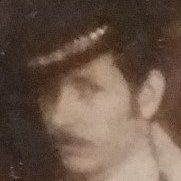
We need a sticky cartoon thread
Father Kit Cool Gun Garth replied to Badlands Beady's topic in SASS Wire Saloon
-
-

It's Almost Friday Humor Thread
Father Kit Cool Gun Garth replied to Subdeacon Joe's topic in SASS Wire Saloon
-
-

Asking You For Prayers
Father Kit Cool Gun Garth replied to Subdeacon Joe's topic in SASS Wire Saloon
-
Jeff Beck Blackfoot Dave Mason Barefoot Jerry Doctor Hook Mac Gayden Brewer & Shippley Canned Heat The Band Poco Spencer Davis Group Bonnie Raitt Tommy James and the Shondelles Ray Charles *The Charlie Daniels Band* * From The Ballad of the Uneasy Rider through the “Million Mile Reflections” album, Charlie and the boys were rockers!! The country music industry wouldn’t have anything to do with them or The Marshall Tucker Band!
-
Usually I can watch FB videos once without issue, but I can’t get any sound this time. I am proud to say that I can wield a sledge hammer. Just not as long as I used to.
-
Prayers heading up Joe for your brother Michael & wife Joan. For you as well Joe. Eyesa & Ellie
-
Praying for relief
-

No more "Reacher" for me.
Okie Sawbones, SASS #77381 replied to Sgt. C.J. Sabre, SASS #46770's topic in SASS Wire Saloon
Well, he is trying hard to lose me as well. He just doubled down on his bullchit statements. Then he went on to trash DeSantis. Is he trying to sabotage his career? -
Definitely will do Joe.
-
It's Almost Friday Humor Thread
Marshal Mo Hare, SASS #45984 replied to Subdeacon Joe's topic in SASS Wire Saloon
A Scottish guy wanted a donkey for his young son....he spotted an advert for one for sale so went along to have a look at it. When he got to the farm the farmer told him. 'I'm really sorry...I'm afraid the donkey died last night'... 'OK....so how much are yee asking for it'? 'Sorry? I just told you it's dead'! ‘Aye...I heerd yee...so how much d'yee want fer it'? Very patiently the guy explains very slowly. 'The....donkey...is ...dead'. 'AYE...I heerd yee!...Look...I'll give yee £20.00 for it...noo is it a deal or no'? So the farmer asks ( as you might ). 'what the hell are you going to do with a dead donkey'? 'I'll sell it'!... 'b..b...you can't sell a dead donkey'! 'Watch me'. So he loads up the dead donkey and goes on his way. A month or so later the farmer bumped into the guy at the local market. 'How did you get on with the Donkey'? 'I did very well...I got over £6000.00 fer it'! 'WHAT!? How the hell did you do that'!? 'I sold raffle tickets at £10.00 each...I sold 650 of 'em'! 'Sweet Jesus!...didn't anybody complain that the poor bugger was dead'? 'Aye...the guy that won did...so I gave him a refund'. -
-

Classic Cowboy/Cowgirl Showdown 2024
Major Art Tillery replied to Major Art Tillery's topic in SASS Wire
Going to be a great time, It can't come fast enough! Currently have 38 classics signed up, if everyone makes it, ...it will be the largest gathering at any Showdown! -
Beauty In The Ears Of The Beholder - Add Your Own
Cypress Sun replied to Calamity Kris's topic in SASS Wire Saloon
And another from a Tampa Bay area native. -
Iowa class model at the antenna range, Pt Loma, Navy Electronics Laboratory. The model is made of wood and plated in brass. The model is 18'6" long, 27.5" wide and weighs 550 pounds. 1949 Press Release - In planning communications systems for ships at sea, Navy scientists seek to design shipboard antennas capable of sending out substantially the same amount of energy on all directions. This problem is attacked at the US Navy Electronics Laboratory, San Diego, California, by the use of miniature ships whose topside structures are precisely scaled counterparts of full-sized naval vessels. These models make it possible to conduct investigations of shipboard antenna directivity under controlled conditions on land. Scale factors of 1/12, 1/24, and 1/48 are used in the studies and are applied both to the construction of the miniature ships and to the radio wavelengths most commonly encountered in shipboard communications. In practice, the scale model is mounted on a turntable and rotated over a mesh of hardware cloth while it antennas are supplied with energy at the correct radio frequency. The hardware cloth simulates the conductivity of the ocean at regular communication frequencies. The radiated energy is received and its intensity measures at special stations on the rim of the "ocean". These measurements give radiation characteristics of the small antenna, and by extension, the performance of a full size antenna aboard a full size ship at communication frequencies. Each ship is electronically complete down to the waterline. Each has operational antennas for transmitting and receiving radio signals at varying frequencies. Because metallic ship environments distort and alter the radiations from antennas, and obstructions topside provide added interference, antenna efficiency usually depends upon the placement, design, and number of the antennas. The Laboratory tests the efficiency of a particular antenna design by sending and receiving signals in all frequencies while the ship model turns through the 360° of azimuth on a 22-foot turntable in the center of a 160-foot lead and wire-coated field. The coating provides environmental conditions roughly approximating those of the ocean. An actual ship could make only a limited number of turns in a day, with consequent loss of operational time, manpower tieup, and interruption of other training. Moreover, changeable weather conditions would prohibit testing under controlled physical conditions, as is possible on a controlled range. A further great advantage of the range is the design and test of communications systems as an aid to ship preliminary design. Technically, the artificial ocean is a conducting ground plane, and the experiments measure on the ship models vertically polarized components of horizontal-plane patterns in the 96 to 1440 megacycle range, simulating the 2- to 30-megacycle band. A two-axis free space mount, available for measurement of zenith coverage patterns in the 1000 to 3000-megacycle range, can accommodate scale models (usually 1/4 scale) of ship masts and superstructures. Use of a wire mesh ground plane of about 40,000 square feet with five 90-foot wood poles permits realistic full-scale tests of simulated ship antenna systems, and an additional 120-by-150 wire mesh ground plane has a rotating antenna mount for development and test of specific antennas for ship and shore applications. Ship communication mock-up facilities in the antenna range building make possible the study and development of complete ship radio communication systems under conditions simulating those aboard ship. Improvements now under way at the ship model range will permit absolute measurement of antenna patterns and extension of measurement to evaluation angles above the horizon. Nearby microwave facilities include a range for rapid and accurate determination and recording of the free space radiation patterns, impedance, and gain characteristics of microwave antennas in the frequency range from 1000 to 10,000 megacycles. NEL engineers must study as many as 3,000 to 5,000 radiation patterns for each new ship design. To lighten their workload the antenna range specialists recently devised a Pattern Analyzer Computer (analog to digital) equipment which is used to determine values required from the antenna patterns by an IBM computing machine. The history of US Navy electronic technology at Pt. Loma The history of electronic technology began on Pt. Loma a long time before the establishment of the laboratory here in 1940. On May 12, 1906, a chief petty officer and two sailors drove a horse-drawn wagon to the downtown pier and loaded up a massive 5-kw. transmitter/receiver, the state-of-the-art in communications. This was the new age of "wireless radiotelegraphy," which the Navy would eventually shorten simply to "radio." Many hours later, in the little station house they’d set up on top of the hill, the equipment had been installed. The chief sat down and tapped out a hopeful message to the Mare Island Naval Radio Station. He was hopeful, because the distance record for Navy wireless communication at the time was about 125 miles, and Mare Island was 500 miles away. He was stunned by an immediate reply, and in celebration commissioned the facility as Navy Radio Station Pt. Loma. On June 1, 1940, Secretary of the Navy Frank Knox established the Navy's first laboratory on the West Coast, the U.S. Navy Radio and Sound Laboratory. Its mission was to perform research and development in communications and radio propagation. In 1943, a second West Coast laboratory was established in the high desert at Inyokern, Calif., the Naval Ordnance Test Station (NOTS), charged with improving naval weapons systems, particularly those dropped from aircraft. NOTS became the Naval Undersea Warfare Center, the Naval Undersea Research and Development Center, and the Naval Undersea Center (NUC). The naming history and name changes across seven decades is convoluted, so try to follow along. (see the SSC San Diego Org History flow chart in photos for more subornate commands involved and integrated along the way). U.S. Navy Radio and Sound Lab (NRSL)(1940) Who also worked together with UCDWR (University of California Division of War Research) U.S. Navy Electronics Laboratory (NEL)(1945) UCDWR and NRSL combined to create NEL Naval Command Control and Communications Laboratory Center (NCCCLS) (1967) Naval Electronics Laboratory Center (NELC) (1968) Naval Ocean Systems Center (NOSC) - On March 1, 1977, NELC and NUC were consolidated to form the Naval Ocean Systems Center (NOSC) Naval Command, Control and Ocean Surveillance Center (NCCOSC) RDT&E Division (1992) combined to become NRaD Space and Naval Warfare Systems Center San Diego (SSC SD) (1997) Space and Naval Warfare Systems Center Pacific (SPAWAR Systems Center Pacific or SSC Pacific) (2008) Naval Information Warfare Center(NIWC) (2019)
- Today
-
I got a text from my eldest brother, Michael, that he was unable to wake his wife, Joan, this morning, and so was in the ER with her. She's suffered from Alzheimers for some time now. So, if you could spare a prayer or two for them it would be much appreciated.
-
Although 600jr.'s can be found for well under $100 https://www.ebay.com/sch/i.html?_nkw=Mec 600 Jr&norover=1&mkevt=1&mkrid=711-156598-737224-3&mkcid=2&mkscid=102&keyword=mec 600 jr&crlp=435076399324_&MT_ID=585636&geo_id=&rlsatarget=kwd-739830783&adpos=&device=m&mktype=&loc=9002924&poi=&abcId=1141846&cmpgn=6549992845&sitelnk=&adgroupid=77479675334&network=g&matchtype=p&gad_source=1&gclid=CjwKCAjwz42xBhB9EiwA48pT76A4UWqYf49hFg4_c6s279eKKkY_M_3nXoJ8TMWsFc1nXSJly3oQcBoCE5EQAvD_BwE


